Ensuring successful school leavers - Howard Fancy
Howard Fancy
Secretary for Education
Community News
Article
1209 words
Schooling Focus
Ensuring successful school leavers
There’s something in the Kiwi psyche that makes us fill with pride when we do well on the international stage.
Think about Peter Jackson and King Kong, Michael Campbell and his sensational golfing achievements, Hayley Westenra’s musical success, fashion guru Karen Walker with her internationally renowned label and Chris Liddell, who moved from boss of Carter Holt Harvey to a top job in Microsoft.
In our schools, students from all ages, subjects and disciplines are taking on the rest of the world and making their mark.
We frequently get information showing New Zealand students are performing at and beyond international standards and overseas countries are looking at New Zealand’s educational success stories.
Internationally our teachers are highly regarded and our students on average are doing well compared to other countries and some, particularly in maths and science, very well indeed.
In primary schools results from an international survey (the Trends in International Mathematics and Science Study (TIMMS)) show major gains for Year 5 students between 1994 and 2002 in both maths and science.
A domestic survey of student literacy achievement (the 2004 National Education Monitoring Project (NEMP) results) shows our Year 7 and 8 students are making significant improvement in oral reading and progress in other areas, including technology and music.
The OECD’s Programme for International Student Assessment (PISA), which looks at the literacy levels of 15-year old students in reading, maths and science, showed in 2000 and again in 2003 that our students were in the second highest performing group of countries in the world.
In reading we have the highest percentage of readers in the top category in any country.
We have more students staying on in school and over the last two years the number of students leaving school with a qualification has gone up. For example, in 2004 some 32% of school leavers achieved University Entrance – up significantly from 27% in 2002.
There are challenges to do better. We have an unacceptably large gap between our top achievers and those who are not achieving. Too many students who come from poorer backgrounds, are Maori, Pasifika or have disabilities or special needs do not achieve as well as they should do.
There is a lot of work going on to close this gap. A starting point is that being poor or having a disability is not an acceptable reason for low achievement.
A big investment is taking place to develop and support different ways of teaching that can be used to hook students onto learning. There is a big shift away from a “one size fits all” approach to approaches that take much greater account of the individual differences and backgrounds of students.
The focus on teaching is a system wide responsibility. It is not just about teachers investing in their professional capabilities. It is about the leadership and culture in schools. It is about the wide range of professional, research, information and resources that are available to schools and their teachers.
Across the system there is a very strong focus on literacy and numeracy. It is vital that students can read, write and communicate well.
Some 70,000 children have participated in a major numeracy initiative which is paying dividends. We are seeing not only all groups of students doing better but also the gap between top and bottom students reducing.
Our young people are part of the text generation. They are designing their own web pages, making their own movies and developing their own computer games.
While most of us can’t image what is in store for the next generation in terms of technological advancement we need to ensure they have the skills and knowledge to thrive in our fast-paced and rapidly changing world.
They will be entering a world of work where Asian, Latin American and Middle Eastern countries will be very important compared to the world that was dominated by our relationships with the UK and USA that many adults like me entered when I left university.
The flexible school curriculum can be adapted to the different abilities and learning needs of students. Besides the important basics of reading, writing, maths and speaking, the curriculum also includes information and communication technologies, technology, outdoor education and the arts.
The curriculum is also being updated to ensure we are keeping up with the needs of today’s students. And assessment is giving us much more relevant information about a student’s ability and knowledge.
Changes in secondary schooling are much broader than simply introducing the National Certificate of Educational Achievement (NCEA) as a new qualification.
Secondary schools are now giving students more learning options and allowing them to progress at different speeds and along different learning pathways.
Success can no longer be seen as simply the school leaving qualification – important though that is.
It will remain vital that students leave school strong in the basics of literacy and numeracy. But success also needs to be seen in each student successfully progressing into tertiary education – whether that is through an apprenticeship, a polytechnic, a wananga or a university.
Students need more advice and guidance about career and qualification options. Such advice is not simply about the nature of different jobs but also the needs of modern workplaces in terms of the ability to problem solve, to work in teams, to be customer focused, the ability to work across national borders and the ability to relate to people of different cultures.
The NCEA is part of the changes happening. It is about supporting schools to develop a range of learning programmes that suit different students’ needs while still requiring their achievement to be assessed against national standards.
The bright kids can fly while those who need more time to learn are no longer excluded or forced to repeat a whole year’s work.
The senior secondary system and the NCEA will continue to evolve. We are working to have a system that is fair to students, gives them coherent and rigorous programmes of learning, motivates them to learn and helps them make successful transitions into tertiary education.
The Schooling Strategy, launched in 2005, is a plan of action for the next five years. It will see people involved in education at all levels working together to ensure most effort goes into the things that really do make a difference.
It centres on two critical contributors to student success – effective teaching and the role and contribution played by families and communities.
The Extending High Standards Across Schools project gets underway in earnest in 2006. It involves schools that are making a significant difference to improving their students’ learning passing on how they have done this to other schools and working with these schools to help them improve their students’ learning.
We all need to work together as parents, teachers, community representatives, academics and policy makers in the best interests of all our students.
My expectation is for every student, no matter who and what their educational needs, to have the opportunity to achieve to their educational and social potential during and after their school days.
SIDE
BAR
Useful websites:
For
assessment:
www.tki.org.nz/r/assessment/parents/
For
Extending High Standards Across Schools:
www.minedu.govt.nz/goto/extending
For the Schooling
Strategy:
www.schoolingstrategy.govt.nz
ENDS


 Braden Currie: Sets Sights On The Ironman North American Championships In Texas
Braden Currie: Sets Sights On The Ironman North American Championships In Texas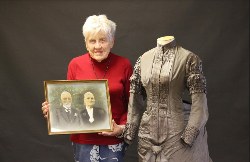 Whanganui Regional Museum: Historic Wedding Dress Unveiled, A Piece Of Marton’s Heritage
Whanganui Regional Museum: Historic Wedding Dress Unveiled, A Piece Of Marton’s Heritage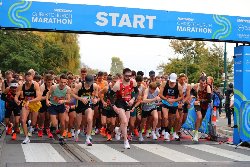 Donovan Ryan: Local Runner Takes Out Frontrunner Christchurch Marathon
Donovan Ryan: Local Runner Takes Out Frontrunner Christchurch Marathon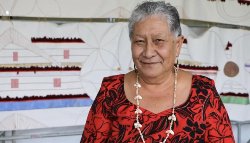 University of Auckland: Tributes Flow For Much Loved Pacific Leader Melegalenu’u Ah Sam
University of Auckland: Tributes Flow For Much Loved Pacific Leader Melegalenu’u Ah Sam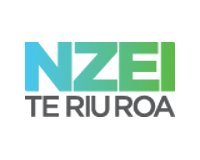 NZEI: Ministry Of Education Cuts Will Disproportionately Affect Pasifika
NZEI: Ministry Of Education Cuts Will Disproportionately Affect Pasifika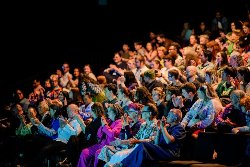 Day One Hapai te Haeata: Call To Action For Young Filmmakers Against The Backdrop Of Funding Cuts
Day One Hapai te Haeata: Call To Action For Young Filmmakers Against The Backdrop Of Funding Cuts